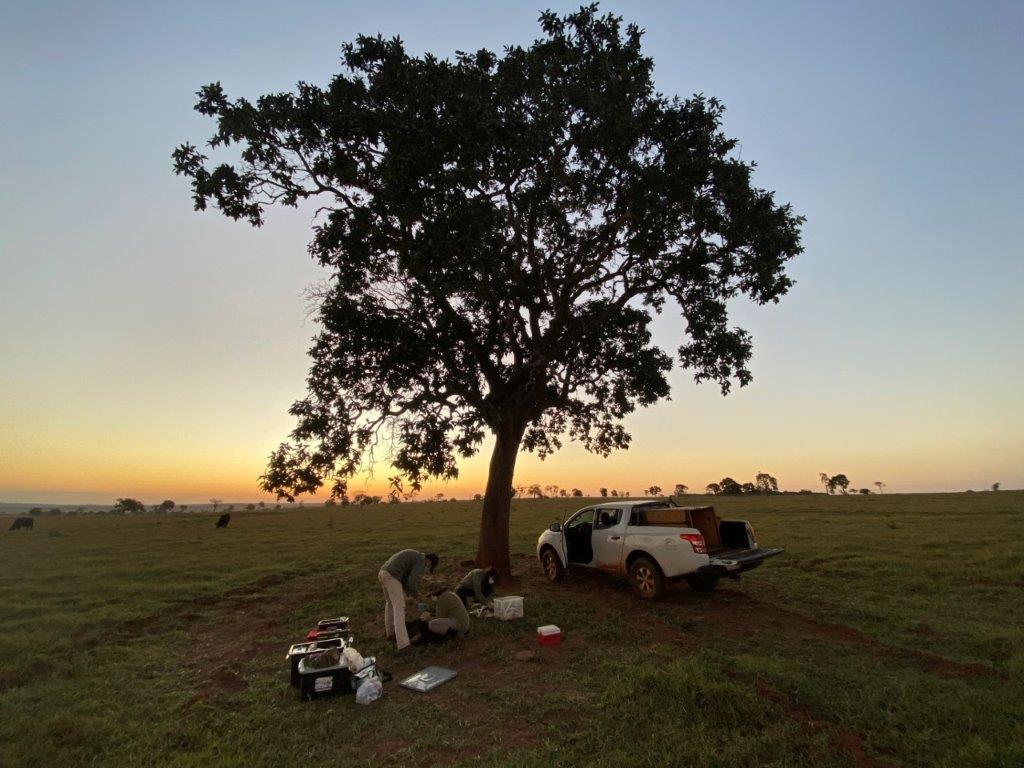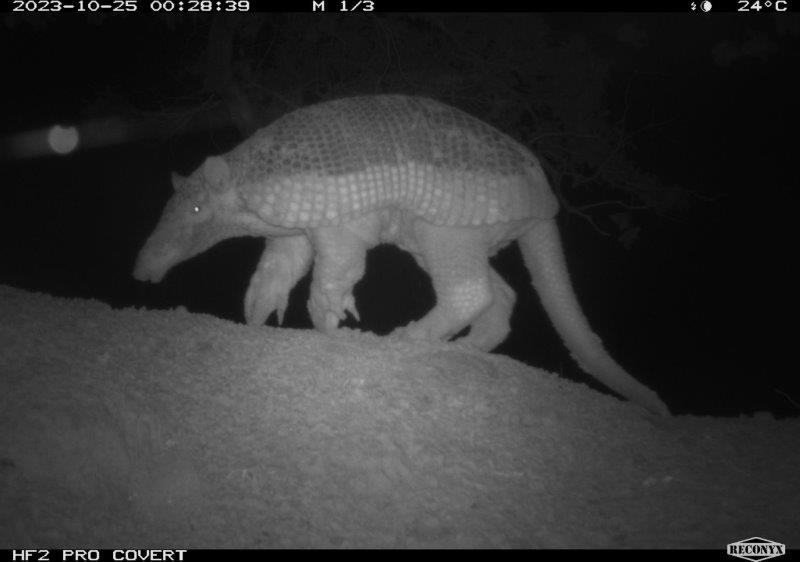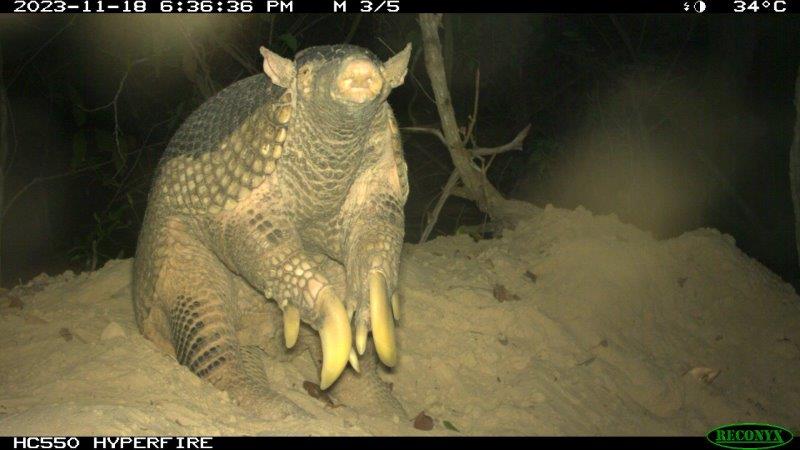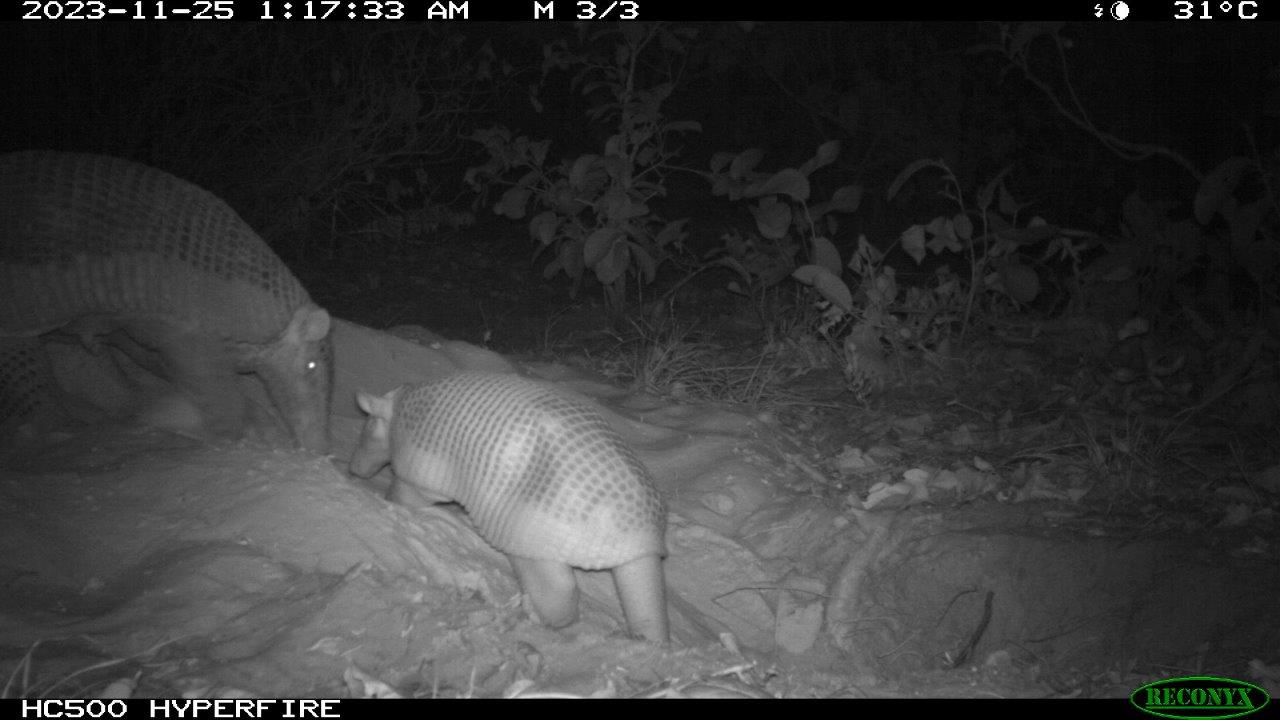Looking back at a successful 2023 for giant armadillo conservation
26/02/2024 in RZSS
Our charity has worked with Dr Arnaud Desbiez and his team at the Wildlife Conservation Institute (ICAS) in Brazil for over a decade to safeguard endangered giant armadillos, giant anteaters and their threatened habitat. This team has discovered nearly everything that is currently known about giant armadillos and has made incredible strides in making habitats and roads safer for giant anteaters.
2023 was a fantastic year for the project, from the Cerrado to the Pantanal. Here, Arnaud brings us up to speed with what’s been happening with ICAS’ giant armadillo conservation work last year.
Giant Armadillo Cerrado Project in 2023
The main goal of this project is to implement Integrated Management Areas (IMAs) for giant armadillos to help prioritise and protect key areas for their conservation in the Cerrado of Mato Grosso do Sul. This year, we have consolidated our long-term field research site in the Parque Natural Municipal do Pombo (PNMP). Protecting 8,032 hectares of native biome, this is the only formally protected fragment of Cerrado in Mato Grosso do Sul where the giant armadillo has been recorded.
Over the course of the year we have expanded the camera trap grid to cover the whole PNMP, with 85 cameras and 75 km of trails! With the full park covered, we’ve spotted two new species of tegu lizards that had not been found in the state of Mato Grosso do Sul before, as well as seven-banded armadillos. This means eight species of Xenarthra (the family that consists of armadillos, anteaters, and sloths) are found in this park.
The cameras also showed us new giant armadillo behaviour, including scratching trees!
Looking ahead to this year, with new funding we are aiming to increase the legal protection, visibility and value with the PNMP, implement pilot initiatives with the community and use giant armadillos as landscape detectives, analysing their movements to identify the best areas to improve, restore or protect land.

Looking back at a successful 2023 for giant armadillo conservation
Armadillos & Honey Project in 2023
Giant armadillos are being killed by beekeepers because they destroy their beehives to consume larvae. One giant armadillo can destroy a beekeeper’s livelihood in a matter of weeks, which sadly can lead to retaliatory killing.
The main goal of this project is to promote the coexistence of beekeepers and giant armadillos. Last year we tested three new methods to prevent giant armadillo attacks on hives.
In 2023 we celebrated 150 out of an estimated 200 beekeepers either being or in the process of becoming wildlife-friendly certified in Mato Grosso do Sul. We expanded the project beyond this area and 16 keepers in four other states have also been certified.
Thanks to this certification, their honey is being sold at a higher price (10%) with an increase in sales (20%) according to a study. A new project to breed and donate high-quality queen bees to smaller certified beekeepers as an additional incentive has provided 140 queens to 10 beekeepers.
In the next year, we will continue to certify more beekeepers and will partner with Suzano to ensure all beekeepers on their land become certified and receive adequate training. Recently, we were contacted by an NGO working with Indigenous communities in the Xingu (Amazon) asking for our assistance!
There will also be a focus on increasing the number of factories purchasing honey from certified beekeepers. While we have had success expanding certification to outside of our state, we hope to one day export giant armadillo-friendly honey to international markets beyond Brazil.

Giant armadillo spotted at night on a camera trap
Giant Armadillo Atlantic Forest Project in 2023
The Giant Armadillo Atlantic Forest Project was started in 2018, in the state of Espírito Santo. This area was critical as it is the most eastern area of the giant armadillo’s range, as well as one of the very few fragments of Atlantic Forest where giant armadillos have been documented. Disappointingly, we were too late to save this population, with only two individuals, possibly three, registered after two years of fieldwork and camera trapping.
While we keep in touch with our partners at the Sooretama Biological Reserve, we have not conducted any fieldwork in the complex since 2020. Instead, we started a new project in the Rio Doce State Park (PERD) in Minas Gerais, which is now the last known giant armadillo population of the Atlantic Forest. This initiative aims to assess the viability of this giant armadillo population and engage the local population so that the species does not go extinct, and instead becomes a source of pride and a symbol of conservation efforts in the park.
Last year, the third action planning workshop, uniting species conservation projects in the Rio Doce State Park, was conducted. We had almost 60 participants in total and made great progress on how to strengthen our collaborations to maintain and expand the park which protects so many unique species.
In 2024, we will continue to visit the buffer zone around the park to gauge the presence or absence of giant armadillos. There are also plans to increase our environmental education and awareness initiatives in the surrounding communities as we update our education materials.
The eco bag project, which encourages alternative livelihoods for locals will be expanded and we will continue to strengthen our group Unidos pelo PERD (a group that brings together species conservation projects) so that together we can better serve and protect the park.

A giant armadillo showing off it's huge claws, used for digging and foraging for food
Giant Armadillo Pantanal Project in 2023
Thanks to two generous donations we were able to build a new field station with two rooms and a bathroom. Finally, we will no longer need to camp and will have a comfortable place to sleep.
We captured four new giant armadillos this year and fitted them with telemetry devices. A regular armadillo, twenty-year-old Isabelle, has been monitored by our team for over a decade, and was recorded with a new pup, providing the first estimate of reproductive longevity for giant armadillos.
Seven new ranches were incorporated into the community firefighting brigade in 2023. Our brigade now includes 22 ranches that protect 1,600 km2 of land from wildfires. Thankfully no out-of-control wildfires have occurred in the area since we started our community fire brigade three years ago.
In 2024, we will continue our long-term study of the species in the Pantanal, which is crucial to our research and conservation efforts in all locations. Captures will continue to focus on adult females for us to monitor and gather more data on reproduction and we will expand camera monitoring to work in Isabelle’s home range to follow the progress of her pup.
Despite the lack of devastating fires recently, we are committed to run another training session on firefighting to maintain our community fire brigade, while continuing to monitor fires in the region through daily satellite imagery

You can help save threatened giant armadillos in Brazil and support Arnaud and his team by donating today support.rzss.org.uk/donation
We would like to thank the players of People’s Postcode Lottery for their generous support which has helped this project. 
Dr Arnaud Desbiez
ICAS Founder and Director
Featured Articles

An update from the Budongo Forest
19/04/2024 in Conservation

Edinburgh Zoo named best zoo in Scotland
15/04/2024 in Edinburgh Zoo

























Follow EZ